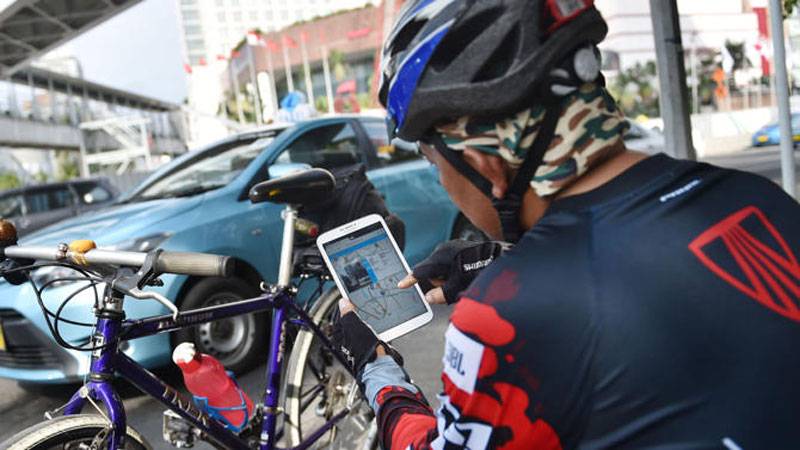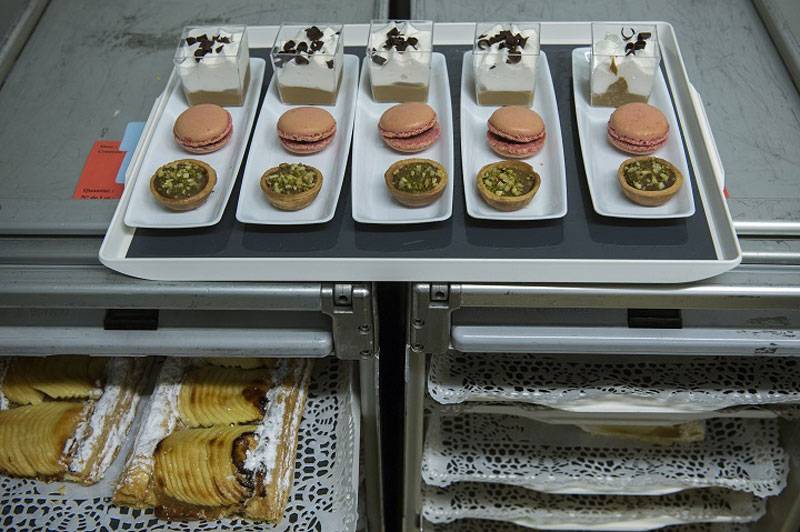Tsunami warning stumbles at the `last mile’
BANGKOK (Reuters): In April 2012, Indonesia’s Banda Aceh, the city worst hit by the tsunami that killed at least 226,000 people on Boxing Day ten years ago, received a terrifying reminder of how unprepared it was for the next disaster. As an 8.6-magnitude quake struck at sea, thousands of residents shunned purpose-built shelters and fled by car and motorcycle, clogging streets with traffic. A network of powerful warning sirens stayed silent. No wave came. But if it had, the damage would have been “worse than 2004, if it was the same magnitude of tsunami”, said Harkunti Rahayu, from Indonesia’s Bandung Institute of Technology. As the 10th anniversary of the disaster approaches, experts and officials say weaknesses remain across the region in a system designed to warn people and get them to safety.
For millions in coastal areas, warnings don’t always get through, thanks to bureaucratic confusion and geography. In the most vulnerable areas, infrastructure is wanting, and many lack the basic knowledge to keep themselves safe from the deadly waves.
Since the disaster, a sophisticated early warning system has sprouted from next to nothing, costing over $400 million across 28 countries.
With 101 sea-level gauges, 148 seismometers and nine buoys, the Indian Ocean Tsunami Warning System can send alerts to countries’ tsunami warning centres within 10 minutes of a quake, Tony Elliott, the head of the UNESCO secretariat that oversees the system, told Reuters.
But there has also been mismanagement and waste.
In Indonesia, a German-funded detection initiative built an expensive network of buoys - and then scrapped them - after reports of cost overruns and signs they were ineffective.
All but one of nine Indonesian-operated buoys had been lost or damaged by fishermen, said Velly Asvaliantina, an official at Indonesia’s Agency for the Assessment and Application of Technology.
The remaining buoy is not operational, she said.
Elliott said technological advances mean the lack of buoys is not a significant impediment in tsunami detection.
A far bigger concern is getting warnings to at-risk coastal communities, and making sure people get to safety in time.
In some of the countries worst affected in 2004 - Thailand, Indonesia and India - much progress has been made, officials said. But concerns remain about this final, crucial stage.
The 2012 failure in Aceh prompted a reassessment in Thailand, where 5,395 people died in 2004, said Somsak Khaosuwan, head of Thailand’s National Disaster Warning Center.
“We put our systems to the test each day. Our warning system is one of the best in the world, but I must admit we lack maintenance,” he said.
Samit Thammasarot, a former head of the agency who was ousted from his position following a 2006 coup against then Prime Minister Thaksin Shinawatra, was more damning.
“If a tsunami happened today, would we be prepared? No, we would not,” Samit told Reuters.
“On an official level there has been, in the past, corruption and cut-price equipment bought that does not meet international standards.”
In India, the new system struggles to communicate alerts by fax, text message and email to remote locations, said Ajay Kumar, an official at the Indian National Centre for Ocean Information Services.
“Some of the people, officials, are not getting the alert,” he said.
“Secondly, one thing that has come out from the drills is that the last mile connectivity is still missing. If (a) tsunami is coming, even now people don’t know what is to be done, where to move.”
In Indonesia, where at least 168,000 people died in Aceh province in 2004, the warning and evacuation system is beset by bureaucratic infighting.
“Of course I’m worried. I’m hoping there is no tsunami again,” said Mochammad Riyadi the head of the Earthquake and Tsunami Centre at Indonesia’s Meteorology and Geophysics Agency (BMKG).
Aceh provincial authorities have resisted calls to conduct monthly sound checks of the six sirens in operation, despite their failure in 2012, Riyadi said.
The BMKG has also tried for the past seven years to hand control of the warning system to the local government, but has been rebuffed, he said.
Local authorities dispute this account. The head of Aceh’s disaster agency, Said Rasul, said the BMKG should be doing the tests.
“If the BMKG wants to hand over management of the tsunami sirens, then they have to give us the human resources,” he said.
Building standards in Indonesia, including Aceh, are also still dangerously below par, said Jonatan Lassa, a research fellow at Singapore’s S. Rajaratnam School of International Studies.
The 2012 alarm showed people did not trust the warning system, he added.
“People were saved by chance, by the tsunami not happening, and not by the warning system,” he said.
Some communities have also been rebuilt in particularly vulnerable coastal areas.
“Should there be a tsunami, I think the impact will be the same (as 2004),” Lassa said.
Jakarta bets on web drive to lift fortunes
JAKARTA (AFP): The Indonesian capital - a chaotic metropolis with shaky Internet access - is hoping to turn its fortunes around with an ambitious online platform that allows residents to report problems, from crime to traffic jams, with their smartphones. concrete jungle with a population of about 10 million, Jakarta is infamous for monster traffic snarl-ups, rubbish-strewn, pot-holed roads, heavy pollution and flooding that engulfs poor slum areas every year. After successive leaders failed to get to grips with the myriad problems, new governor Basuki Tjahaja Purnama is seeking to harness technology in the hope of driving through real change.
Launched a week ago, the Smart City plan gives people a platform to report problems - such as floods, rubbish left lying in the street, potholes and crime - with the idea that nearby officials should then quickly respond.
“We hope people will be active in reporting. If you want to be served well, then help us monitor the city,” the governor, who has two million Twitter followers, said at the launch of the project.
The initiative’s main website, smartcity.jakarta.go.id, uses Google Maps and is integrated with app Waze, owned by Google, which allows drivers to share real-time traffic information.
The site also links up to two smartphone apps that have been specially designed for the project. The first, Qlue, is for residents to report problems, while the second, CROP, allows officials nearby to respond.
When a problem is reported, a red marker appears on the main site and when it is resolved, the marker turns green.
Purnama, famed for fiercely reprimanding bumbling officials, hopes the initiative will speed up a bureaucracy criticised as bloated, ineffective and crippled by corruption.
The governor, known by his nickname Ahok, has also ordered the 30,000 neighbourhood chiefs in Jakarta to prove they are doing their jobs by tweeting reports of problems in their area along with a picture, and is threatening to base their pay on how many messages they post.
The Internet had already become a popular tool among Jakartans for reporting problems in the city - particularly traffic - but Purnama’s is the first comprehensive plan by authorities to use the web to run the metropolis.
While observers welcomed the initiative, they also expressed serious doubts about whether it would work in a city with patchy Internet access and technology-shy officials.
“It is a good idea, but I am not sure it will be effective,” Ahmad Safrudin, a campaigner for cleaner air in Jakarta, told AFP.
“In my experience, many in Ahok’s administration are not even familiar with email.”
Suhono Harso Supangkat, an IT professor from Bandung Institute of Technology, pointed out there were still some black spots in the capital where it is hard to get online.
Internet penetration in Indonesia remains relatively low, with fixed broadband reaching below five percent of the population, although many more people are logging on via smartphones, particularly in big cities such as Jakarta.
But the biggest downfall of the initiative, critics point out, may be the failure of city officials to get to grips with the technology.
A district head, Fidiyah Rohim, said that many officials were confused about the system and had not even attempted to use it yet.
“I have neither accessed the website nor downloaded the application,” he told the Jakarta Post newspaper.
In dogfight over posh airline food, the sky’s the limit
PARIS (AFP): Michelin-star food and vintage champagne: airlines are pulling out all the stops to cater to their first-class passengers’ tastes, as they seek a larger slice of the highly profitable market. “Business class has become the main battleground for all companies because the market in this very profitable sector is highly competitive and the clients very demanding,” said Bertrand Mouly-Aigrot, aviation expert at Archery strategy consulting. The consultancy estimates the airline food market is worth a tasty 10 billion euros ($12.3 billion) with a wide discrepancy between the various classes of travel. A dish in economy tends to cost between five and nine euros, business class between 15 and 30 euros and for first class, the sky is - literally - the limit. Singapore Airlines touts itself as “the only company to offer the world’s two most prestigious champagnes: Dom Perignon and Krug Grande Cuvee”.
The airline spends around 18.4 million euros ($22.5 million) every year just on champagne and wine, with catering amounting to 5.5 percent of its total costs.
And with companies scrambling to stand out from the crowd with the extravagance of their menu, they are hiring top chefs to create tasty morsels.
“A meal helps to make people feel secure, to comfort people, to de-stress people,” said Anne-Sophie Pic, the only female chef in France to hold three Michelin stars, who creates the first-class menu for Air France.
- Posh picnic hampers -
But serving haute cuisine to highly international and demanding diners at 30,000 feet brings its own challenges.
The chefs have to create a menu without certain ingredients - raw fish is banned for example and cabbage and beans ill-advised given the close proximity and confined environment of the cabin.
Cultural niceties also have to be taken into account and not just the well-known aversions to pork: rabbit, for example, is considered delicious in France but seen as bad luck in certain religions - not what you want when flying.
Additionally, tastebuds act differently at altitude and the cabin air is very dry, which also affects how the food tastes.
Chefs find themselves having to add flavour enhancers to compensate. “We add ginger to our sauces to give them a certain bite,” said Michel Nugues, one of the top chefs at Servair airline catering firm.
The challenges don’t stop there. Getting the timing and balance of flavours right for a Michelin-star dish is hard enough on the ground, never mind when having to reheat the food at altitude.
At the main Paris airport, Charles de Gaulle, thousands of sous-chefs whip up the food, dress the plate, then chill and store the meals that are served around the clock on planes around the world.
When just a few seconds of overheating can destroy a meal, chefs are so obsessed with the delicate issue of reheating their creations properly that they often train the stewards and air hostesses themselves.
And with so many different nationalities on board, when it comes to the menu, variety is the spice of life.
“The funny thing is our international guests usually want to try Indian food. The Indian ones want to try the international food. Of course we always offer them different choices,” said Lieve Vannoppen, European catering manager for the Indian airline Jet Airways.
Boris Eloy, director of marketing and innovation at Servair, said that while the technology behind the catering is cutting-edge, the concept of offering air passengers something special dates back to the early days of flight.
“In 1933, the barmen of the Ritz and George V Hotels would spend their days off making picnic hampers for Air France passengers,” said Eloy.








